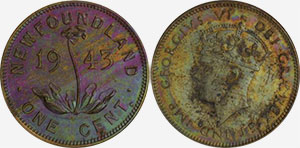The Hobby of Kings
By Bank of Canada | Monday, 1 December 2008
Although Roman emperors reputedly collected coins, modern collecting traces its origins to the great Renaissance poet and author Petrarch, in the 14th century. Subsequently, European royalty and popes, fascinated by all things classical, became avid collectors of coins; hence the nickname, hobby of kings. During the 17th and 18th centuries, coin collecting became more disciplined and methodical, giving birth to numismatics, the study of coins and medals. Numismatics gained popular appeal in the 19th century, with numismatic societies established throughout Europe and North America, including Canada, where the Numismatic Society of Montreal was launched in 1862. Illustrated catalogues and price lists also became widely available. Today, numismatics, a hobby pursued by millions, is usually viewed as encompassing the history of money and the study of all its forms, including paper currency and tokens.
Collecting currency has considerable appeal. Not only are coins, tokens, and bank notes works of art, but they also provide a window into history and society, with each item having its own story. It is a pastime that is accessible to everyone: you do not need to be wealthy to enjoy the hobby of kings. Most people start by collecting money from their own countries, beginning with the coins and bank notes in their pocket or purse.
You might want to consider selecting a theme for your collection. You could, for example, start with coins or bank notes of a particular denomination, or money from a specific time period. Alternatively, you could collect oddly shaped coins from around the world or coins depicting a particular subject. The choice is virtually limitless, but the key is to specialize.
Joining a numismatic club and drawing on the experience of other members is one way to seek guidance. Reputable coin dealers are another source of advice, as are the many useful numismatic magazines and newsletters. Coin shows, flea markets, and the Internet are other important resources.
When assembling your collection, you should take note of a few key points. First, a good numismatic reference book is essential. It will provide you with important information regarding dates of issue, varieties, and prices. Having some basic knowledge about the historical context of pieces and their market value will save you time and money.
Second, never clean your coins or bank notes yourself, since you risk damaging them and reducing their value. Consult a professional conservator or numismatic museum. Third, you should handle your pieces as little as possible, since your fingers contain acids that can damage the surface. If you must touch them, use cotton gloves, and always handle coins and bank notes by their edges. To reduce the chance of damage from handling, store coins and bank notes in clear plastic holders (PVC free).
Fourth, quality counts. Buy the highest-quality piece that you can afford, unless you are more interested in the history of the piece than in its investment value. Finally, while collecting can be a profitable long-term venture, you should do it primarily for the fun of collecting and the knowledge gained.
This article represents a portion of the publication Beads to Bytes - Canada's National Currency Collection from the Bank of Canada.
More articles
- Canadian coins
- Canadian banknotes
- Canadian tokens and medals
- International
You can submit your own articles by contacting us.




